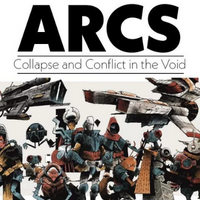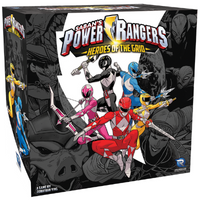16 September 2022
|
Engine Optimisation
In Free Ride, you build lines and run trains on them. So far, so predictable. But while there’s plenty that’s familiar here, I’m not sure that it matters. It’s always fun to plan a route around the map, to race trains and to visit as many destinations as possible, and there are a few twists that keep the game interesting.
The first thing that strikes you when you crack open the box, is just how much this looks like Ticket to Ride. The map has pre-printed routes of different lengths between cities, which you’re going to place track onto; there are a bunch of destination cards and the art style is almost identical. The game feels very similar too, but there’s more strategy involved here.
A tableau of destination cards is displayed at the side of the board; with three cards in each column. Each card shows a single city. Each column represents two possible routes – either top card to middle card OR middle card to bottom card. When your train is in the city shown on either the top or middle card, you may pick up this card and the destination below it. When your train has travelled the route, this pair of cards is added to your scoring pile. You’ll score highly for each unique destination, so you want to complete as many routes as possible.
Clearly, some routes are more valuable than others, as cities that are close together on the map will be easier to complete than those which are far apart – so these pairs of cards will be in high demand. In practice, however, it’s rare that two players are equally well positioned to snatch the route up at exactly the same time, so there’s a fair amount of luck here.

The hardest thing to do is to keep track of all the options on the tableau. In fact, it’s nightmarish. There are 18 cards on display, and even when you’ve worked through all the possible options and got a plan in mind, it’s really hard to retain the information long enough to properly strategize. The cards all look very similar, the locations of the cities are not shown, there’s no colour coding for areas and whenever a route is claimed, that whole column is cleared and replaced. So it’s normal to find yourself re-planning multiple times. Frustrated players frequently resort to putting their tokens on cards in the tableau as a reminder of where they’re working towards, but this is far from ideal as secret planning becomes public information. It’s a real flaw: slowing the game and reducing enjoyment.
Sections of track may be player-owned or state-owned. You may run your train on your own line or on a state-owned line for free; but to run on a line owned by another player, you must pay them a coin to convert it to state-owned line. But coins are valuable (for end game scoring and buying track) and once you open up a line, anyone can use it. This results in reduced interaction in the early game as players try to avoid one another, but can switch to a free for all as key lines become available later on. It’s a bit like a giant game of chicken – how long can you go before someone starts paying to open lines?
As routes start to run out, players are incentivised to ‘leave’ the map, collecting a coin for every round that the game continues. It’s possible to rake in the points with a carefully timed exit, which makes the end of the game feel important.
Ellie Dix
PLAY IT? MAYBE
Maintaining a balance between constructing key routes and timing train runs is enjoyable. But deciphering the tableau and board can give you a headache and games have a tendency to run a little too long at the same sort of pace.
Play this if you liked: Ticket To Ride.
Free Ride has similarities with a bunch of other games – TransAmerica, Jet Set, On the Underground – but Ticket to Ride is the closest. There’s a couple of steps up in complexity, but the rules are still easy to learn and turns can be quick.
Hear from the Ticket to Ride creator on the anniversary of Ticket to Ride: Europe
Designer: Friedemann Friese
Publisher: Rio Grande Games
Time: 50-90 minutes
Players: 1-5
Ages: 10+
Price: £80
What’s in the box?
- Game board
- 135 City cards
- 140 Rail tokens
- 5 Train tokens
- 16 Player mats
- 125 Ownership tokens
- 5 Rails under construction tokens
- 54 Coins
- First player signal tile
Looking for more?

This review came from Tabletop Gaming Magazine, which is home to all of the latest and greatest tabletop goodness. Whether you're a board gamer, card gamer, wargamer, RPG player or all of the above, find your copy here.
Get your magazine hereRead More...

If you want to read more about one of the most hotly anticipated games of the year, check out our interview with Cole Wehrle on ARCS! A new game from the designer of Root and Oath, and we've got all you need to know.
To infinity and beyond
Join us in person

We can't wait for Tabletop Gaming Live 2022! An epic weekend in Manchester full of board games, card games, roleplaying games, wargames and more, with amazing exhibitors, great games, and an opportunity to game together in person.
See you there!Treat Yourself!

Have you visited our game store? We have everything from mystery boxes, to games and accessories – including the above Power Rangers: Heroes of the Grid, with a great discount! Head over to find your new favourite game.
Visit the Game Store
Sometimes we may include links to online retailers, from which we might receive a commission if you make a purchase. Affiliate links do not influence editorial coverage and will only be used when covering relevant products








Comments
Login or register to add a comment
No comments